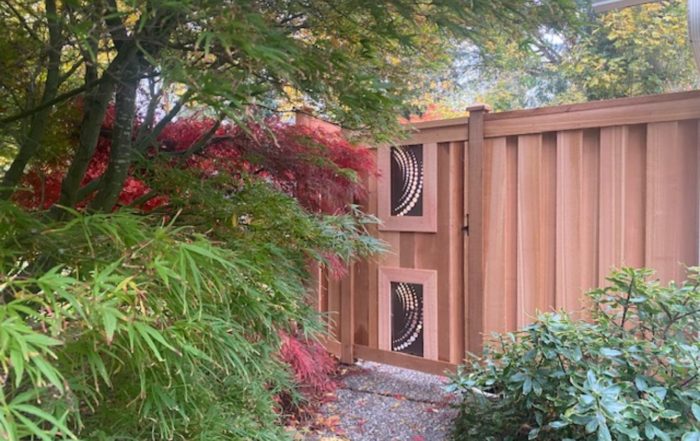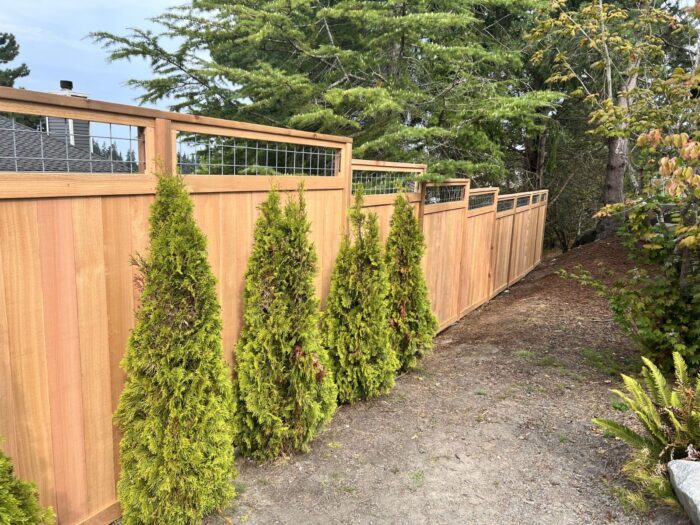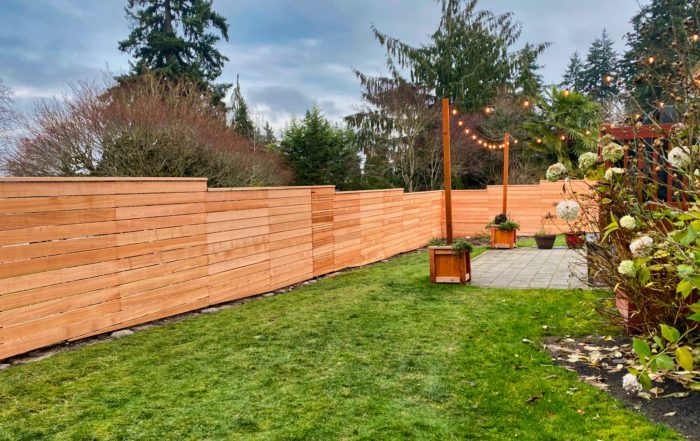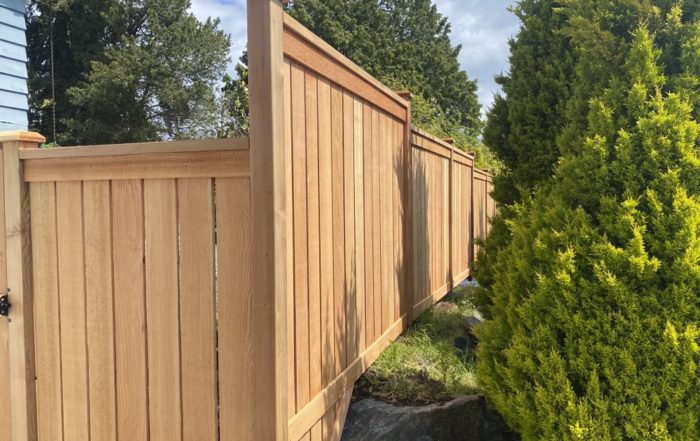Building a fence around your property in Seattle can provide you with privacy, security, and curb appeal. However, it can become a costly and time-consuming nightmare if you don’t plan and execute your project correctly.
In this article, we will discuss the 7 common wood fence mistakes to avoid when building a fence in Seattle Washington, so you can avoid the headaches and enjoy the benefits of a well-built fence.
1. Not Checking Local Zoning Laws
Before starting your fence installation, it is important to check local zoning laws and regulations. For example, in Seattle, the city has specific guidelines on fence height, placement, and material.
Make sure to do your research and obtain the necessary permits from the Seattle Department of Construction and Inspections. Failure to do so can result in fines or removing the fence entirely.
Pro Tips:
- When working with a fencing contractor, ensure they are knowledgeable about Seattle’s zoning laws and regulations.
- Take advantage of online resources, such as the Seattle Department of Construction and Inspections website, which offers detailed information on local laws, permit applications, and guidelines.
- Network with local homeowners or join community groups to share experiences and gain insights on best practices when it comes to fence installations and dealing with local zoning regulations.

2. Neglecting Property Lines
One of the biggest mistakes people make when building a new fence is neglecting to determine an accurate property line. As a result, installing a fence on your neighbor’s property can lead to legal issues and expensive disputes. To avoid this, make sure to review your property deed and consult with a surveyor to determine your property boundaries.
Also, be sure to avoid any fence installation that is too close to the street or sidewalk, as this could violate the city’s setback requirements.
Pro Tips:
- Consider installing visible markers, such as stakes or flags, along your property lines during the planning stage. This will help you visualize the fence installation and make adjustments as needed before starting construction.
- If you share a fence with a neighbor, discuss splitting the cost of the project and collaborating on the fence design.
- Before starting construction, take photographs of your property and the marked boundaries as a reference. This documentation can be helpful in case of disputes or if you need to demonstrate compliance with local regulations.
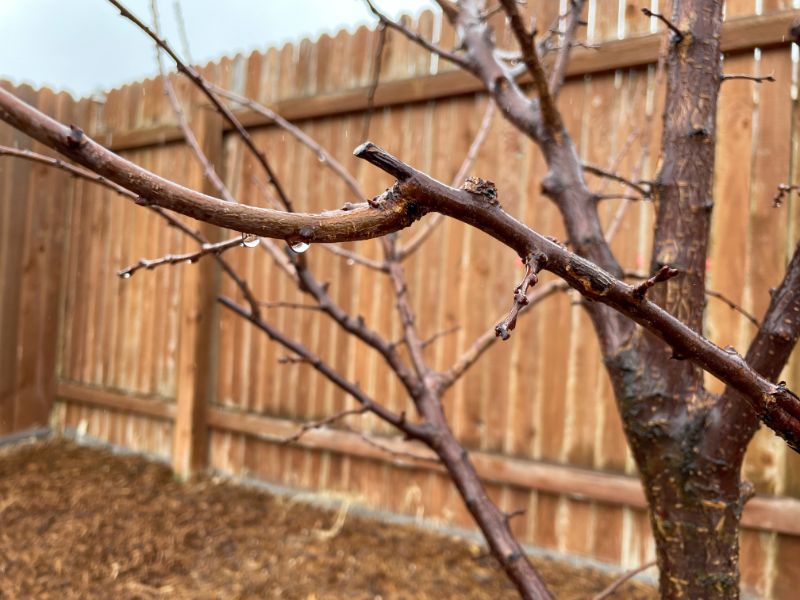
3. Choosing the Wrong Materials
Selecting the right materials is crucial to building a long-lasting and visually appealing fence. In Seattle, the weather can be harsh, with rain, wind, and occasional snowfall. Choosing the wrong materials, such as untreated wood or non-weather-resistant materials, can lead to rotting, warping, or discoloration.
Choose durable and weather-resistant materials such as cedar wood, vinyl, or composite materials that can withstand Seattle’s climate.
Pro Tips:
- Consider incorporating landscaping features, such as plants or shrubs, around your fence to provide an additional layer of protection against the elements.
- Factor in the maintenance requirements of different fencing materials before making your final selection. Some materials, like vinyl or composite, may have a higher upfront cost but require less maintenance over time, potentially saving you money in the long run.
- Cedar is a popular choice for fencing in Seattle due to its natural resistance to rot, decay, and insect damage. Consider using cedar wood as a durable and attractive option in the region’s challenging climate.
4. Poor Drainage
Seattle’s heavy rainfall can result in poor drainage, especially when building a fence on a slope. Poor drainage can cause water to pool around your fence, leading to rotting or instability.
To prevent this, make sure to properly grade your fence line and install drainage solutions such as French drains or gravel-filled trenches.
Pro Tips:
- Consult with a local landscape professional or engineer to assess the specific drainage needs of your property.
- Incorporate landscaping elements like swales, berms, or rain gardens near your fence to help manage water flow and prevent pooling. These features can enhance your yard’s aesthetic while providing additional drainage support.
- Regularly inspect your fence and its surroundings for signs of erosion or water accumulation, especially after heavy rainfall.
5. Not Considering Wind Load
Seattle can experience strong winds, especially during the winter months. If your fence is not properly designed to withstand wind load, it could collapse or become damaged.
Make sure to choose materials and designs that are rated for high winds and install posts deep enough to provide adequate support.
Pro Tips:
- Reinforce your fence posts with concrete or metal anchors to provide additional stability and support in high-wind areas.
- Opt for fence designs that allow wind to pass through, such as lattice, picket, or chain-link fences.
- Consult with a local fencing expert or structural engineer to determine the appropriate wind load requirements for your specific area.
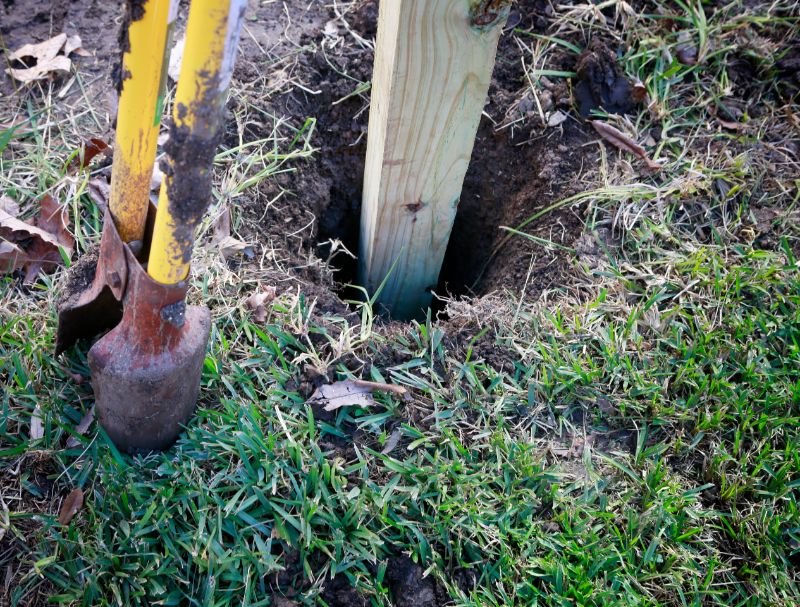
6. Uneven or Improperly Spaced Fence Posts
A fence’s stability and longevity rely on proper post-installation. Uneven or improperly spaced fence posts can result in an unstable fence that can lean, sag, or even collapse over time.
Make sure to accurately measure and space your posts according to the fence style and local regulations. Using quality materials for your posts, such as pressure-treated wood or metal posts, is also important.
The distance between fence posts will depend on the type and height of the material being used. For example, a 6-foot-tall wood fence should have the fence posts spaced no more than 8 feet apart. However, if your fence construction features heavier materials like chain link or heavy wood panels, you want to space them closer together.
Pro Tips:
- Use a string line or a laser level to ensure straight and even fence post alignment during installation.
- Before digging post holes, mark the locations with stakes or spray paint, then double-check the measurements to ensure proper spacing.
- After installing your fence posts, allow sufficient time for the concrete to cure before attaching the fence panels or rails. This will ensure that the posts are properly secured and provide a stable foundation.
7. Ignoring Maintenance
Even the best-built new fence requires regular maintenance to keep it in good condition. Seattle’s climate can lead to wear and tear, fading, or discoloration over time.
Neglecting to clean, stain, or seal your fence can lead to costly repairs or even replacement. Make sure to follow the manufacturer’s maintenance guidelines and schedule regular inspections and upkeep.
Pro Tips:
- Use a gentle pressure washer or a soft-bristle brush with mild soap to clean your fence, avoiding harsh chemicals or excessive pressure that could damage the material. Regular cleaning can prevent the buildup of dirt, mold, or mildew that can deteriorate your fence over time.
- Inspect your fence after extreme weather events, such as storms or high winds, to identify and address any damage or potential issues.
- Trim back any plants or vegetation growing near your wood fence to prevent moisture buildup and potential damage. Overhanging branches or vines can trap moisture and increase the likelihood of wood rot.
Conclusion
Building a fence in Seattle can be a rewarding project that adds value and beauty to your property. However, avoiding these 7 common mistakes can save you from costly repairs, legal issues, or frustration.
Do your research, follow local laws, choose suitable materials, and consider hiring a professional fence contractor to ensure a successful and stress-free project.

